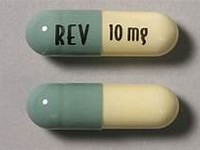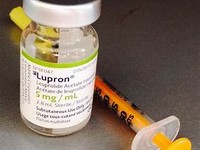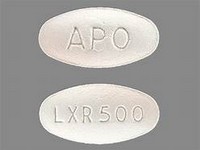Arsenic trioxide

Arsenic trioxide
CLINICAL USE
Antineoplastic agent:
Acute promyelocytic leukaemia (APL)
DOSE IN NORMAL RENAL FUNCTION
150 mcg/kg daily until remission occurs
Consolidation: 150 mcg/kg daily for 5 days
per week for 25 doses spread over up to 5
weeks (to start 3–4 weeks after completion of
induction)
PHARMACOKINETICS
Molecular weight :
197.8
%Protein binding :
96% bound to
haemoglobin
%Excreted unchanged in urine :
1–8
Volume of distribution (L/kg) :
4 litres
half-life – normal/ESRD (hrs) :
92/Increased
DOSE IN RENAL IMPAIRMENT
GFR (mL/MIN)
20 to 50 : Reduce dose, use with caution
10 to 20 : Reduce dose, use with caution
<10 :
Reduce dose, use with caution
DOSE IN PATIENTS UNDERGOING RENAL REPLACEMENT THERAPIES
CAPD :
Unknown dialysability. Dose as in
GFR <10 mL/min
HD :
Dialysed. Dose as in GFR <10 : mL/
min
HDF/high flux :
Dialysed. Dose as in GFR <10 : mL/
min
CAV/VVHD :
Unknown dialysability. Dose as in
GFR 10 to 20 mL/min
IMPORTANT DRUG INTERACTIONS
Potentially hazardous interactions with other drugs
Use with care in combination with
other drugs known to cause QT interval
prolongation
ADMINISTRATION
Reconstition
–
Route
IV
Rate of Administration
Over 1–4 hours
Comments
Dilute with 100–250 mL glucose 5% or
sodium chloride 0.9%
OTHER INFORMATION
Can cause QT interval prolongation and
hypokalaemia
Arsenic trioxide is under investigation
for other conditions, e.g. multiple
myeloma, acute myeloid leukaemias and
myelodysplastic syndromes
Intensive monitoring is required
Renal excretion is the main route of
elimination; can accumulate in renal
impairment
Arsenic is stored mainly in liver, kidney,
heart, lung, hair and nails. Trivalent forms
of arsenic are methylated in humans and
mostly excreted in urine. In APL patients,
daily administration of 0.15 mg/kg/day of
arsenic trioxide resulted in an approximate
4-fold increase in the urinary excretion of
arsenic after 2 to 4 weeks of continuous
dosing, when compared to baseline values
See how to identify renal failure stages according to GFR calculation
See how to diagnose irreversible renal disease
Home









